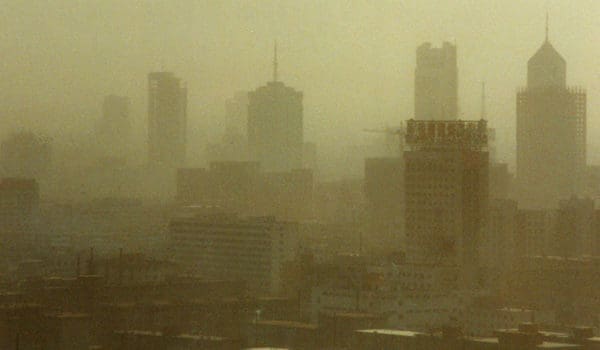Carbon dioxide (CO2) is the main greenhouse gas driving climate change. Asia contains four of the world’s ten largest national emitters of CO2, and China is currently number one.

Burning of fossil fuels is the main cause of rising CO2 levels in the atmosphere, and the global mean atmospheric concentration of CO2 has increased from 277 parts per million (ppm) in 1750 (before the industrial era) to 396 ppm in 2013. However, the CO2 increase in the atmosphere is only approximately half of the total CO2 released from fossil fuels – the other half was absorbed by the land and the oceans, which are referred to as “carbon sinks”.
China leads emissions
During the past two decades, Asia has been one of the world’s fastest developing regions, with large increases in fossil fuel emissions. In 2006, China surpassed the USA as the largest national emitter of CO2.
– This makes Asia a very important region in terms of carbon emissions, says senior scientist Rona Thompson from NILU – Norwegian Institute for Air Research.
With support from the Global Carbon Project, a team of scientists from Norway, Japan, France, Australia, the Netherlands, Russia and the USA investigated Asia’s carbon budget, considering not only how much CO2 was emitted into the atmosphere but also how much CO2 was taken up by the land.
Calculating the land carbon sink
A complicating factor was that there are large uncertainties in how much CO2 is actually released from fossil fuel burning in Asia, and inventories of CO2 emissions differ considerably, especially for China. This was accounted for by using three different emission inventories in three different scenarios, and comparing the estimates to achieve a realistic range of uncertainty.
Using atmospheric observations of CO2 from locations in Asia and the rest of the world, and models of atmospheric transport, the scientists were able to “map” fluxes of CO2 between the land and the atmosphere. With the additional information on the CO2 released from fossil fuels, they could estimate the land carbon sink and how it has changed over time.
Their study focused on the land carbon sinks of East Asia, South Asia and South East Asia from 1996 to 2012. While they found that the land biosphere in East Asia was a sink of CO2, that of South and Southeast Asia was neither a source nor a sink over the period of their study.
Forests play an important role
– One interesting result is that the land biosphere in East Asia has been taking up more CO2 over time. That is, this carbon sink has become larger and explains 35% of the increase in the land sink globally between 1996 and 2012. The increase may be due to reforestation in China and warmer temperatures in the area, Thompson explains.
Previous studies predicted that the land carbon sink in the tropics would grow to take up more CO2. Thompson and her colleagues, however, find little change in the tropical Asian carbon sink between 1996 and 2012. This could be because extensive deforestation in Southeast Asia is counter-balancing other changes that would otherwise lead to an increase in CO2 uptake. They do, however, see a notable reduction in CO2 uptake in Southeast Asia in 1997 and 1998, which was caused by drought and fires related to the strong El Niño in these years.
– It is important to understand how the land and ocean CO2 sinks are evolving over time and how they respond to meteorological conditions and climate phenomena like El Niño, Thompson says.
A system out of balance
The global carbon cycle is out of balance compared to the pre-industrial era. The burning of fossil fuels releases ever more CO2 into the atmosphere, and even though the ocean and land sinks have increased their CO2 uptake, they can by far not match the amount released.
For example, in Asia, Thompson and her colleagues found that the land sink takes up only approximately 17% of Asia’s CO2 emission from fossil fuels, and is smaller than the global average of 28%. Inevitably, to avoid extensive climate change, emissions of CO2 must be reduced.
